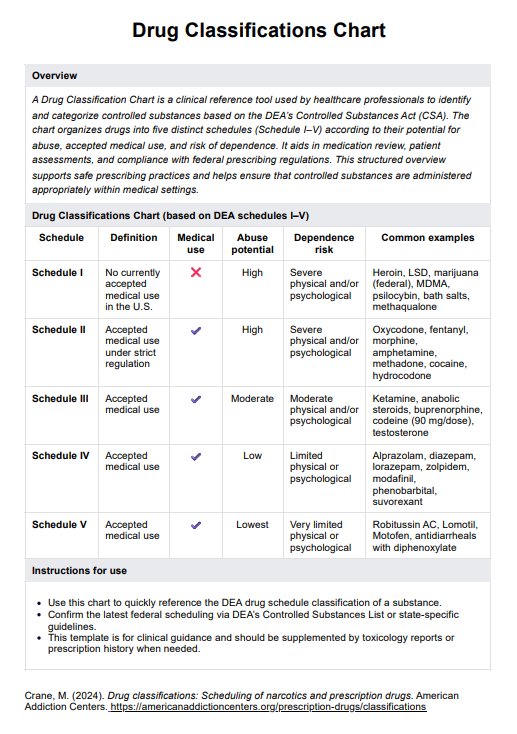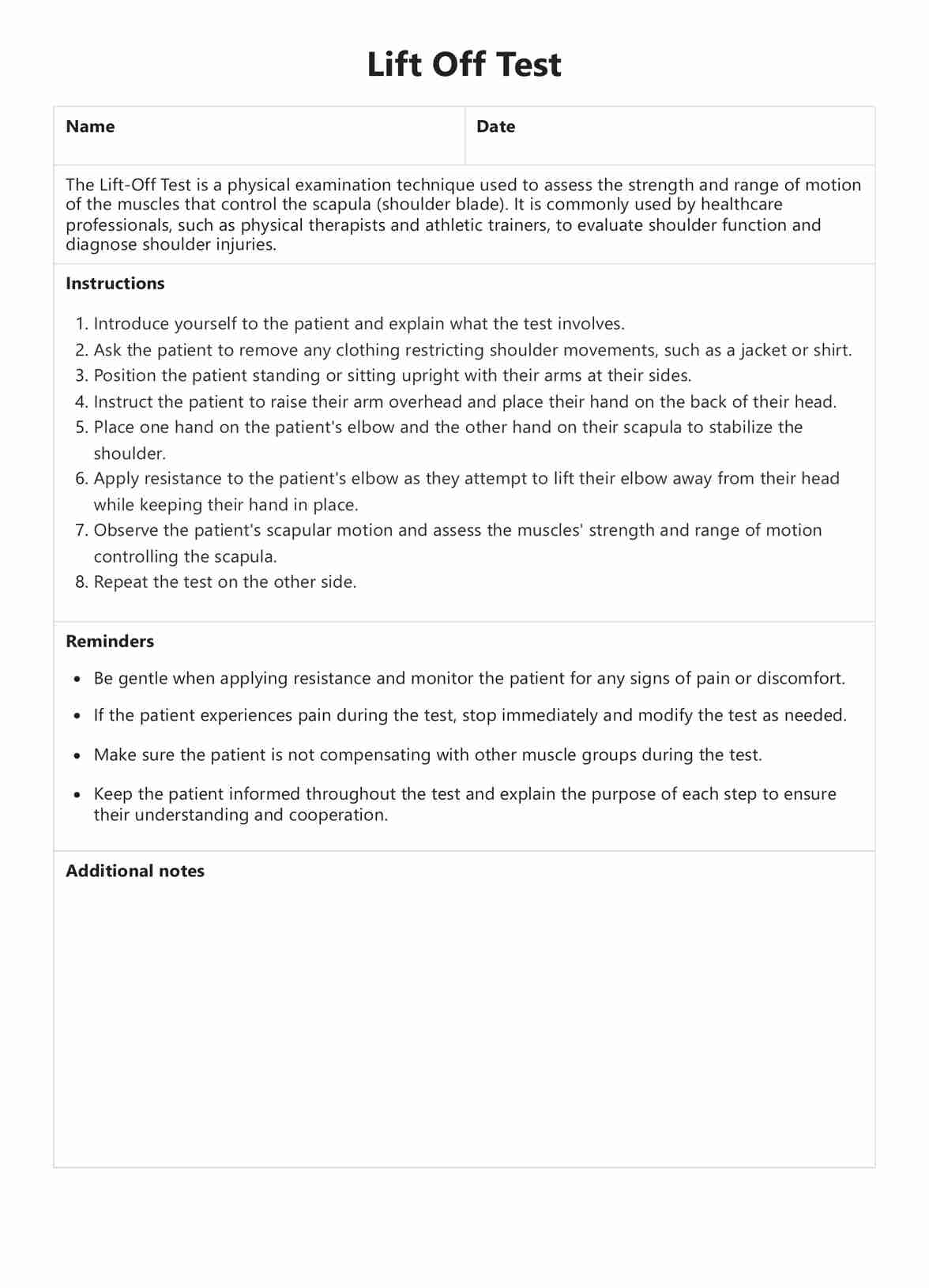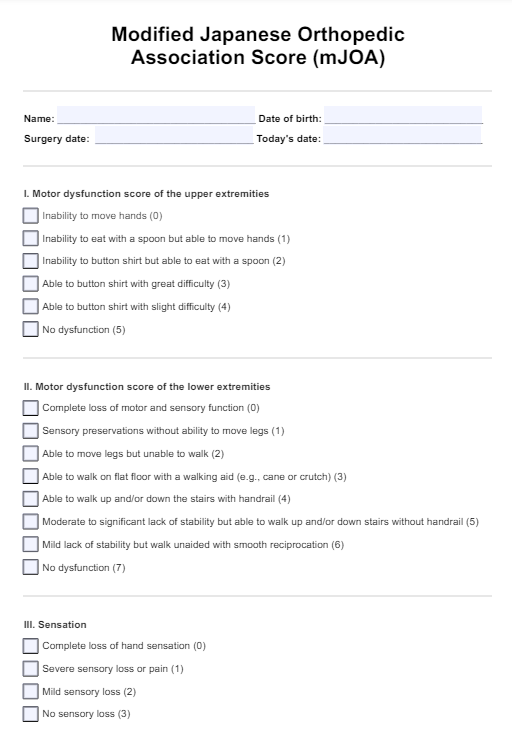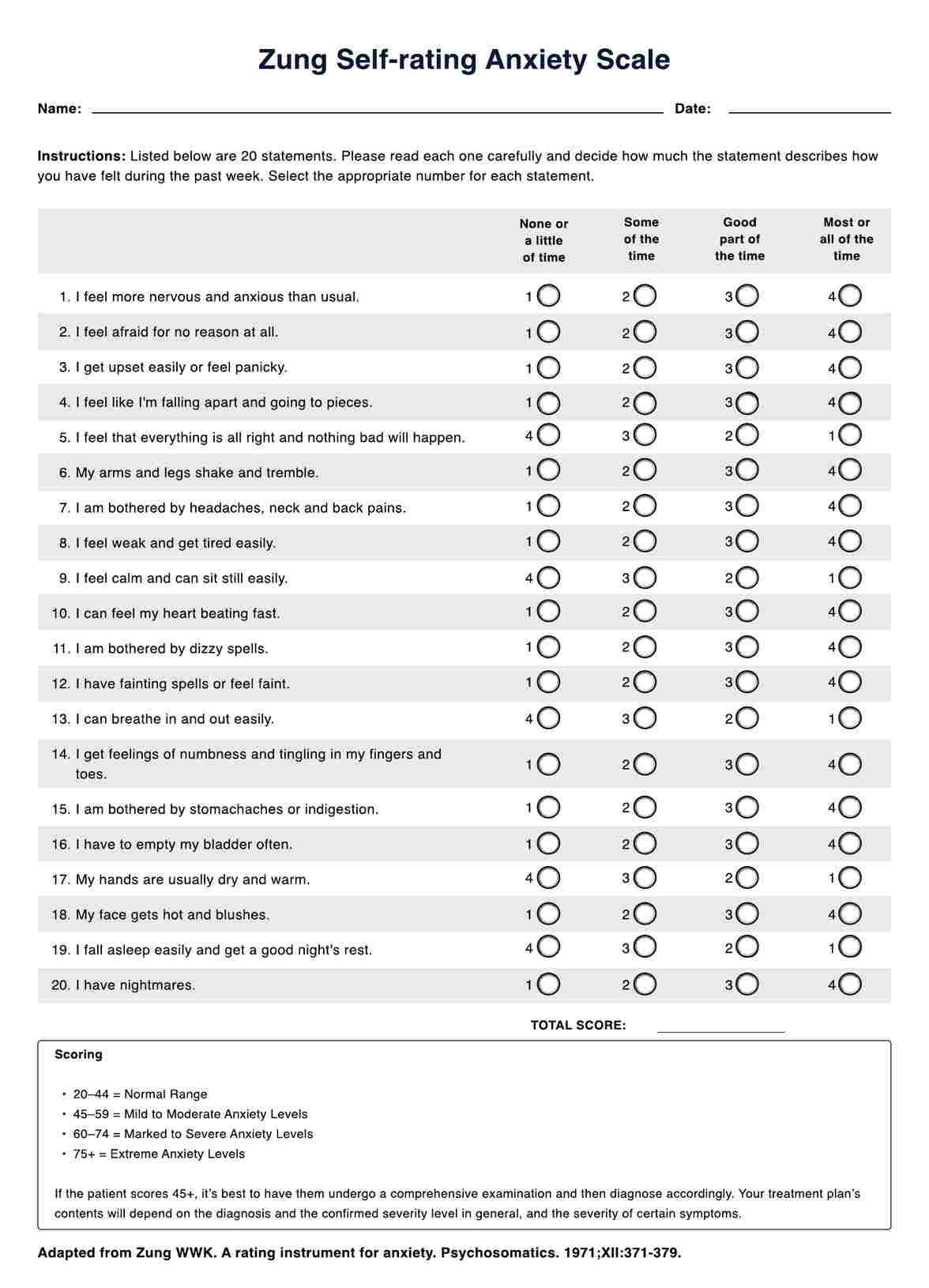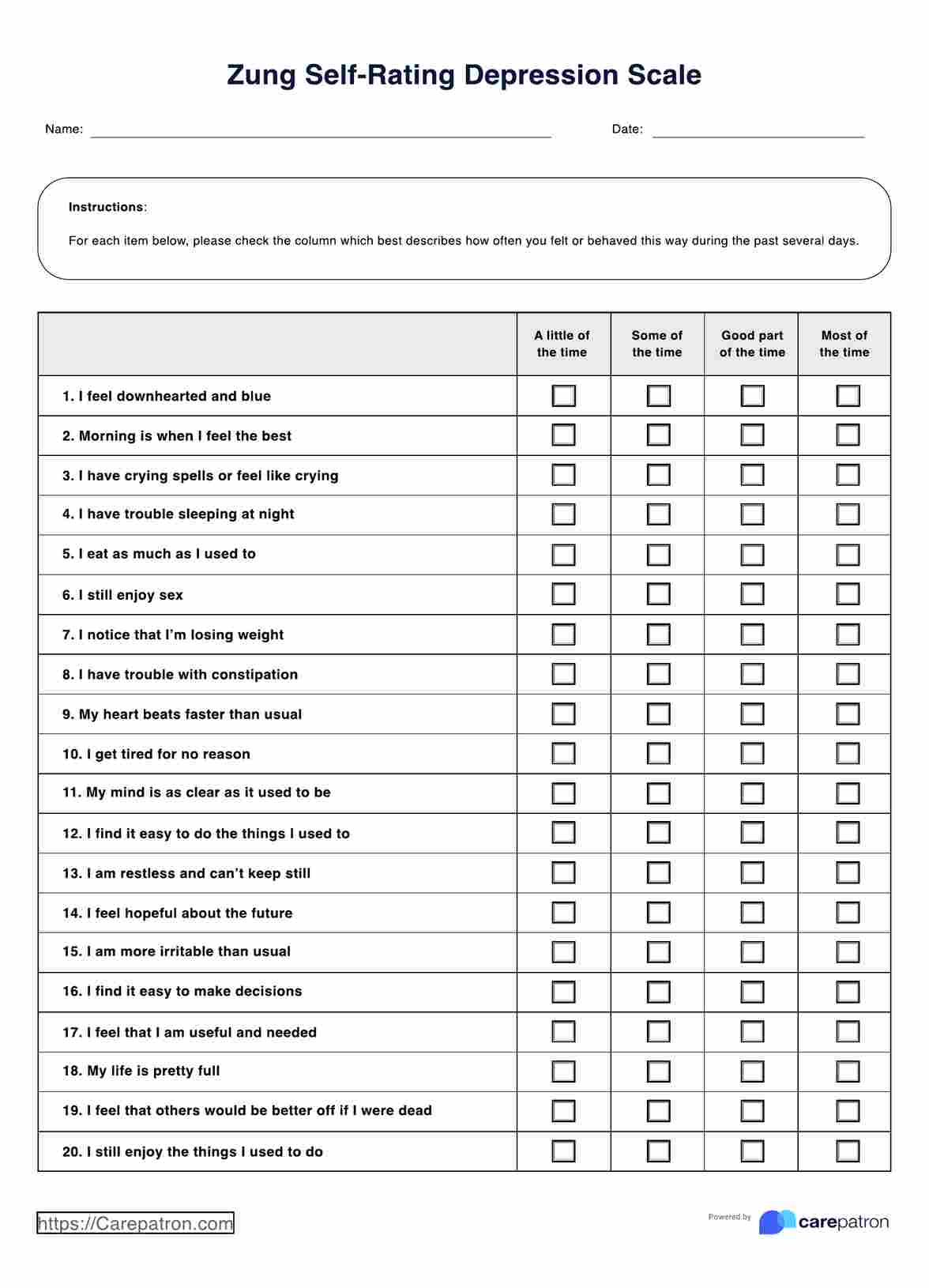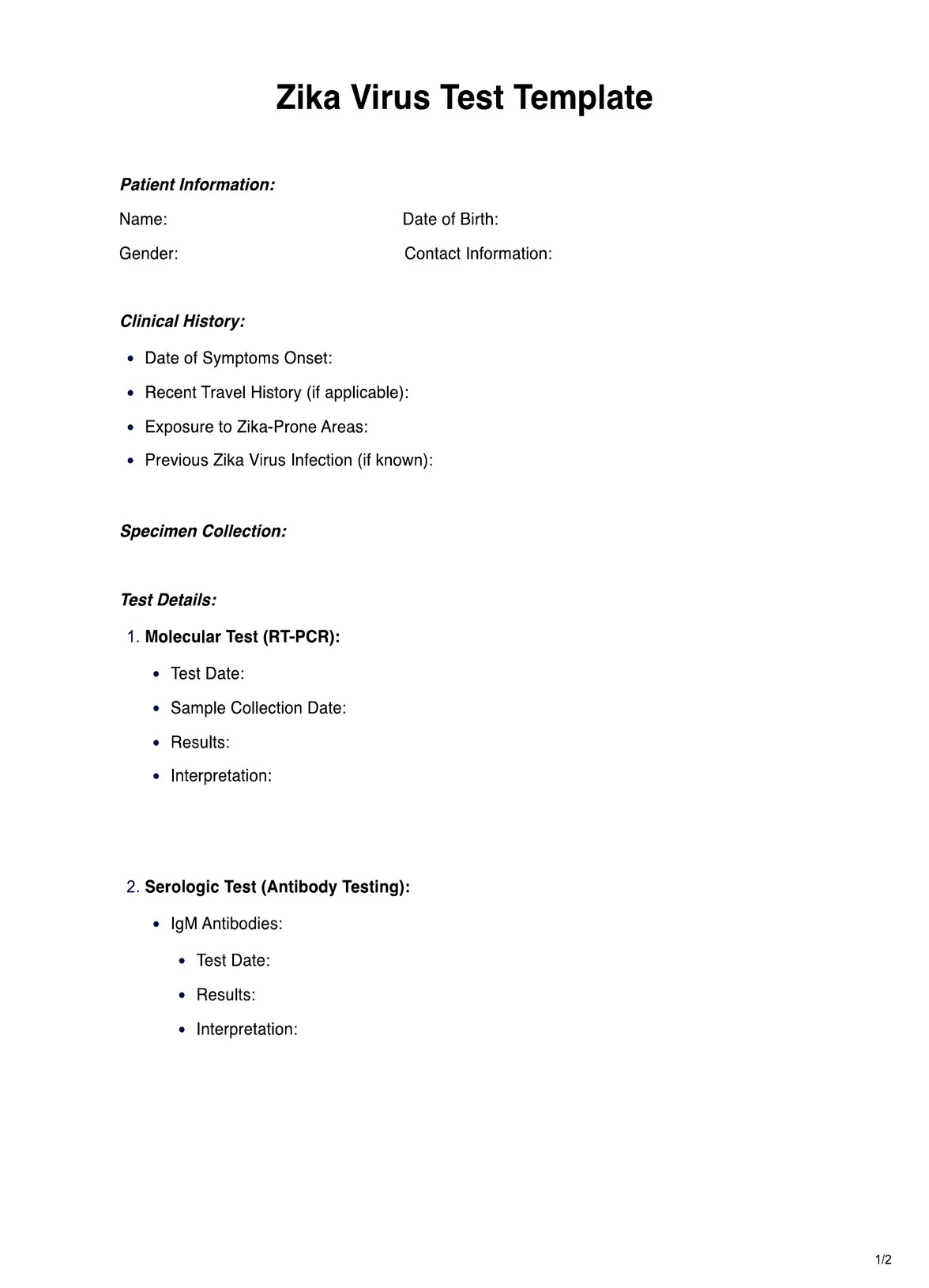Early signs of PDD can often be identified in infancy stages. Still, a formal diagnosis may not be made until the child is older, allowing for a more accurate assessment of developmental progress and challenges.
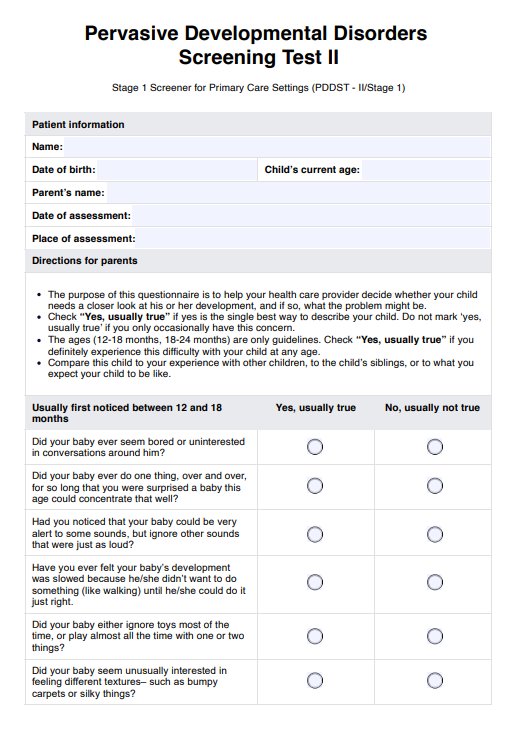
Pervasive Developmental Disorder Test
Explore early detection of PDD with our screening test, guiding further evaluation and tailored interventions for developmental support.
Use Template
Pervasive Developmental Disorder Test Template
Commonly asked questions
While there is no cure for PDD, various treatments and interventions can significantly improve the quality of life for those affected.
Parents can play a crucial role in their child's development through early intervention, seeking specialized support from doctors, and creating a supportive and understanding environment at home.
EHR and practice management software
Get started for free
*No credit card required
Free
$0/usd
Unlimited clients
Telehealth
1GB of storage
Client portal text
Automated billing and online payments


